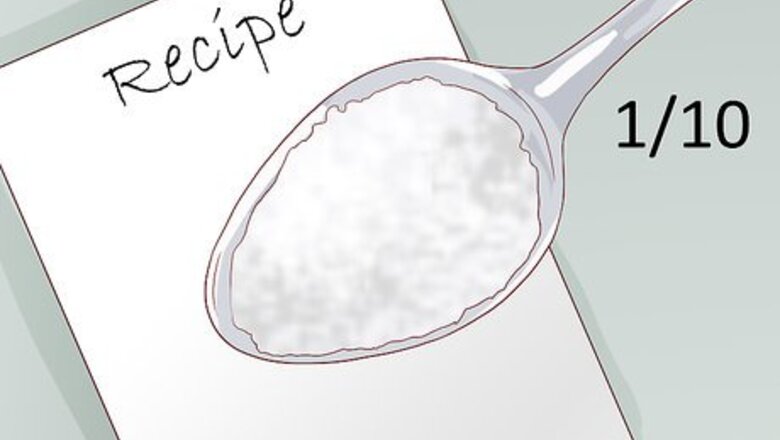
views
Using Less Sugar in Recipes
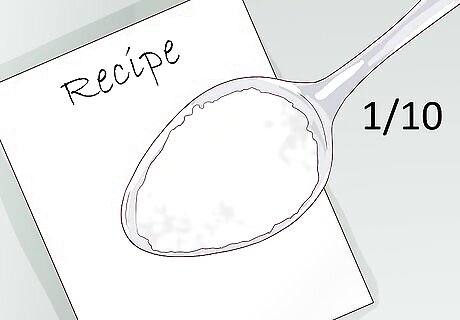
Start withholding only a little bit of sugar at a time. Expect a lower amount of sugar to affect not only the taste, but the texture of baked goods as well. While you may be eager to cut back on sweetness, be conservative with how much sugar you leave out at first. Each time you bake a particular item, cut the recipe’s sugar by only a tenth. Then cut an additional tenth from the original amount the next time and compare the results. Continue cutting the sugar by tenths and testing each batch for both taste and texture. Once you make a batch where either one feels off, you’ll know you left out too much sugar. To find the perfect amount to use sooner, you could also make several test batches all at once, each with a different percentage of the recommended sugar content.

Start with small amounts for fillings. If you’re making a baked good with a filling (like a cake, pie, or doughnut), do the reverse of what you did in the previous step. Instead of cutting back by small increments, start by adding only a fraction of the recommended sugar at a time to your filling. Mix it in with the other ingredients, and then taste-test. Continue adding small increments (again, say a tenth of the recommended amount) until it’s just the right amount of sweet. This works best when the filling contains other ingredients that are naturally sweet, like fruits. However, bear in mind that fruits with tart skins and/or bitter seeds will taste more sour after they’re baked.
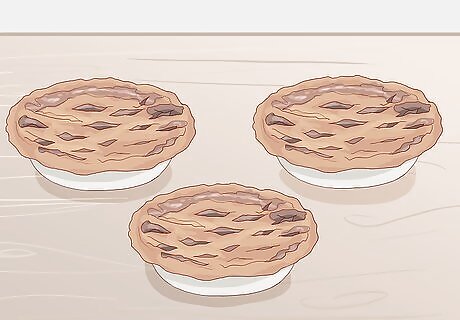
Prepare to experiment. Keep in mind that the amount of sugar included in most recipes is there not only for the sake of taste, but other reasons as well. Whenever you start tinkering with the amount of sugar to be used, be prepared for it to take a few tries before you get a result that you like. So if you’re looking to perfect a recipe with less sugar in one weekend, be sure to buy enough ingredients to make multiple batches. The amount of sugar used affects a baked good’s taste, texture, and shelf life. The effect of the amount of sugar withheld will also vary depending on the other ingredients in a particular recipe. This means that only using ⅓ of the recommended sugar in one cookie recipe may not work as well doing the same with another cookie recipe.
Substituting Alternate Sweeteners
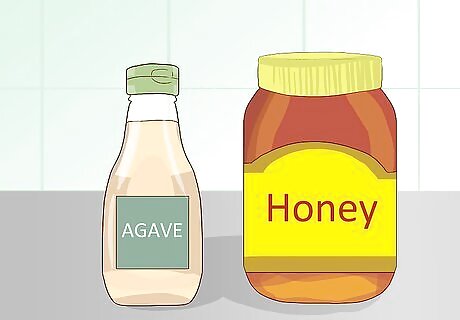
Be cautious with agave and honey. Although these are often referred to as “sugar substitutes,” recognize that label as being slightly misleading. Use these only for the added benefit of vitamins and minerals not found in regular granulated sugar. At the same time, keep in mind that “substitute” in this case only means substituting one form of sugar for another. Remember that these are “healthier” only in the sense that they contain more nutrients, while still containing sugar. The same applies to: Coconut sugar Golden syrup Maple syrup Rice syrup
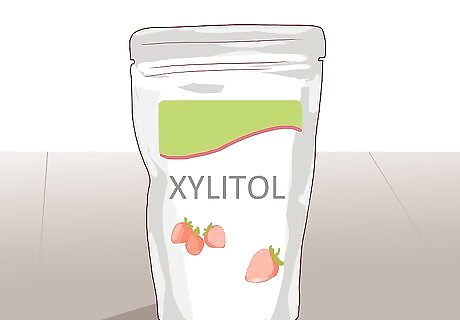
Use xylitol to make life easy. Xylitol is a natural sweetener derived from trees, fruits, and vegetables. If you hate to convert measurements or want to make as few test batches as possible, use this instead of sugar. Not only does it contain fewer calories, but equal portions of xylitol and sugar are equally sweet, so simply measure an equal amount of xylitol that the recipe calls for in sugar. However, be aware that: Xylitol won’t add the same amount of coloring as sugar would when baked. Although it works well in most recipes, it isn’t a good sugar-substitute for those who use sugar as a leavening agent. In large amounts, xylitol works as a laxative, so don’t pig out on your finished goods. Xylitol is toxic to dogs, so don't feed them any baked goods made with it.
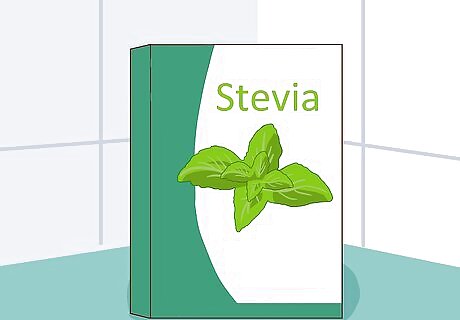
Experiment with stevia. If xylitol turns you off, try this instead to reduce the number of calories in your baked goods. However, keep in mind that a little bit goes a very, very, very long way. As many as 300 parts sugar would be needed to equal 1 part stevia, so expect to use drastically smaller amounts of stevia than the recipe calls for in sugar. With this in mind: Monkeying with sugar-based recipes on your own may require a lot of trial and error. Baked goods that utilize sugar for more than just taste may be drastically affected in terms of texture and moistness. Searching for stevia-specific recipes may be a more effective use of time and resources. Stevia also has a licorice-like taste, which may affect the overall flavor of your finished bake.
Look for recipes containing sucralose. Sucralose is widely known as Splenda. This sweetener can resist heat up to 450 °F (232 °C), so it is ideal for baked goods. Since Splenda is so popular, you can look up recipes with Splenda online. These recipes have already adjusted the ingredients to work well with sucralose. You can replace the normal sugar in your recipes 1:1 with sucralose. This means that you can replace every 1 cup of sugar with 1 cup of sucralose.
Cutting Corners with Other Ingredients
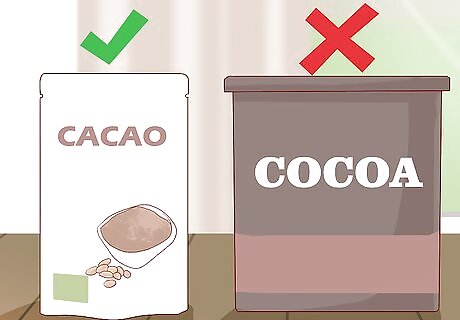
Use cacao, not cocoa. Whenever a recipe calls for chocolate (or cocoa), use cacao instead. This is the rawest form of chocolate, so opt for this instead of a more refined “cocoa” product, which will most likely contain added sugars. Cacao can be purchased in such form as: Nibs or chips Butter Powder Paste

Reduce sugar in toppings. Say you’ve tinkered with reducing sugar from your favorite cake recipe, but found you couldn’t cut as much out as you hoped before it start affecting the texture and moisture. In that case, compensate by eliminating as much sugar as you can from your icing or frosting. Do this by using: Less sugar than the recipe calls for in your topping. Unlike baking, this should only affect its taste. Sugar-free substitutes to make your topping just as sweet as you like with fewer calories. Using alternate toppings for added flavor, like cream cheese, cacao powder, and cinnamon. Use your normal topping but cut the amount in half.
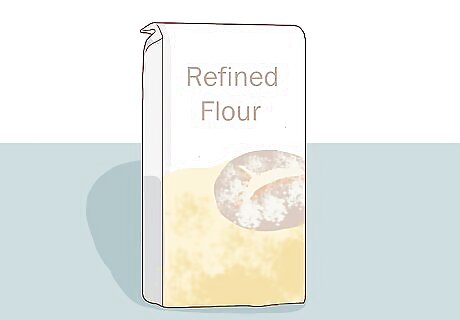
Avoid refined flour. Again, if your experiments still result in more sugar than desired, compensate by being picky about which flour you use with it. Expect refined flours to cause blood sugar levels to spike once they’re digested. Since the sugar in your recipe will likely do the same, minimize the effect by using wholemeal flour instead. The issue with flour isn’t the amount of sugar in it. Rather, refined flours digest quickly in your body and break down into sugars. Wholemeal flour takes longer to digest than refined flour, which can help reduce the “sugar-high” sensation after you feel after eating.
















Comments
0 comment